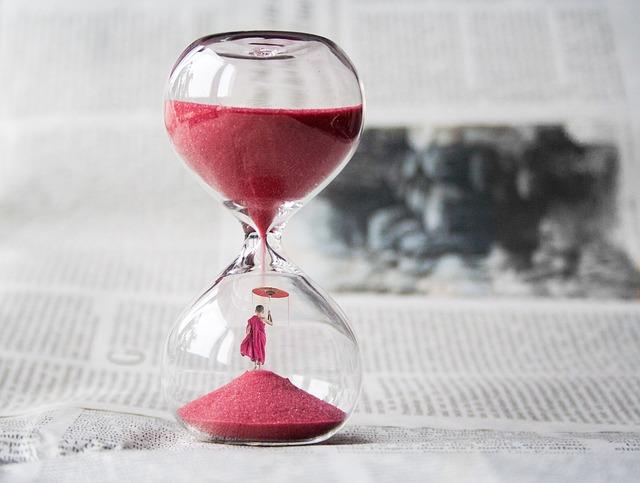Are you ready to dive into the mesmerizing world of music, where every note pulses with a heartbeat? Picture this: you’re at a concert, swaying to the rhythm, but suddenly, you can’t quite figure out how to tap your foot in sync with the song. It’s a familiar scene for many, isn’t it? Understanding beats is like having the key to a secret door in the musical realm—once you unlock it, a whole new universe of sound and creativity opens up! In this article, “,” we’ll break down the essentials of counting beats into manageable steps. From the basics of tempo to practical exercises that groove with your pace, you’ll find clarity in rhythm so you can join the dance of music with confidence. Ready to get started? Let’s turn that perplexing symphony into a delightful melody that you can follow and enjoy!
Understanding the Basics of Musical Beats
When diving into the world of music, it’s crucial to grasp the concept of beats. Simply put, a beat is like the heartbeat of a song—it’s the pulse that keeps everything moving. Imagine you’re at a party, and the DJ drops a killer track. What makes you tap your feet or nod your head? That’s right, it’s the beats! They set the tempo and create the backbone of the music. Understanding how to count beats can dramatically improve your musical skills, whether you’re playing an instrument, dancing, or just enjoying a tune. Here’s what you should know:
- Time Signature: This tells you how many beats are in a measure. Common signatures like 4/4 or 3/4 are your best friends.
- Quarter Notes vs. Eighth Notes: Visualize quarter notes as the main steps in a dance, while eighth notes are like the quick shuffles that keep the energy up.
- Strong and Weak Beats: Just like waves in the ocean, some beats crash in strongly, while others ebb away gently, creating a flowing rhythm.
The relationship between beats is also vital. Think of it like a conversation—you’ve got pauses and emphases that give the language its flavor. For instance, a bass drum might hit on the strong beats, while hi-hats dance around the weaker ones, establishing a dynamic that makes us want to move. To help visualize this concept, take a look at the following table that breaks down a typical 4/4 measure:
| Beat | Type | Description |
|---|---|---|
| 1 | Strong | Kick drum hits |
| 2 | Weak | Snare drum accentuates |
| 3 | Strong | Kick drum hits again |
| 4 | Weak | Hi-hat fills the space |
By learning to differentiate these elements, you’ll not only understand how to tap out the rhythm but also feel it more deeply. Each bite of information brings you one step closer to mastering the art of rhythm, making your musical endeavors all the more enjoyable.

Finding Your Tempo: The Heartbeat of Rhythm
Understanding your tempo is like getting to know the lifeblood of any musical piece. It’s the steady pulse that keeps everything in sync, much like a drummer keeping a steady beat at a parade. Think of it as the heartbeat—without it, music would be disjointed and chaotic. When it comes to counting beats, having a solid grasp of your tempo helps you feel the rhythm rather than just hear it. Picture yourself tapping your foot or nodding your head; those movements are your body’s instinctive way of connecting with the beat. By tapping into the right tempo, you can elevate your performance and truly bring a piece to life.
To effectively find your groove, consider these helpful tips:
- Listen Actively: Play your favorite songs and pay attention to the underlying beat.
- Use a Metronome: This simple tool can help you practice maintaining a steady tempo—start slow and gradually increase your speed.
- Count Aloud: Vocalizing the beats—“one, two, three, four”—can reinforce your rhythmic awareness.
Here’s a simple table to visualize different tempos and their feel:
| Tempo (BPM) | Feel |
|---|---|
| 60 | Languid and Relaxed |
| 120 | Moderate and Danceable |
| 180 | Fast and Energetic |
Finding that perfect tempo may sometimes feel like searching for a needle in a haystack, but with practice and patience, it can transform your understanding of music from merely auditory to a complete sensory experience. Embrace the process, and soon, you’ll not only hear the beats but feel them rhythmically resonate within you!

Mastering Different Time Signatures for Greater Flexibility
When diving into the world of rhythm, it’s essential to embrace various time signatures, each offering a unique flavor to your musical creations. Think of a time signature as the heartbeat of a piece—some are steady like a drum, while others skip and dance. To master these signatures, you can start by familiarizing yourself with the most common ones:
- 4/4: Known as “common time,” it feels like walking on a flat road—steady and dependable.
- 3/4: This signature gives you a waltzy feel, perfect for swirling around the dance floor.
- 6/8: With its rolling rhythm, it sounds like waves lapping on a shore, inviting and flowing.
- 5/4: A bit quirky, this one surprises you like a sudden turn in a path; it’s fun for experimentation.
As you tackle these time signatures, consider practicing with a metronome or tapping along with your favorite tracks. It helps to visualize the beats you’re counting. Here’s a quick look at how the beats break down across different signatures:
| Time Signature | Beats per Measure | Feel |
|---|---|---|
| 4/4 | 4 | Steady, strong |
| 3/4 | 3 | Romantic, flowing |
| 6/8 | 6 | Rolling, lilting |
| 5/4 | 5 | Unpredictable, unique |
Experiment with each of these time signatures to discover how they can transform your music. By combining them in your compositions, you’re not just gaining versatility; you’re unlocking a treasure trove of creative possibilities that can push your musicality to new heights.

Practical Tips to Enhance Your Beat Counting Skills
To sharpen your beat counting skills, start off by immersing yourself in various types of music. Listening to different genres will not only keep things fresh but also familiarize you with a range of rhythms and tempos. It’s like tasting different dishes; each one has its unique flavor, and by sampling a bit of everything, you’ll develop a more sophisticated palate. Try to clap or tap along, breaking down the music into identifiable beats. Don’t be afraid to slow the music down or even use a metronome! It’s a helpful tool that can guide your counting, making sure you stay in sync.
<p>Another effective method is to use visual aids. Think of counting beats as following a dance routine; when you see the movement, you’re more likely to harmonize with it. You can create a simple chart that displays different time signatures, like 4/4 or 3/4, along with examples of songs that utilize them. You could set up a table like the one below to visualize and categorize your practice:</p>
<table class="wp-block-table">
<thead>
<tr>
<th><strong>Time Signature</strong></th>
<th><strong>Example Song</strong></th>
</tr>
</thead>
<tbody>
<tr>
<td>4/4</td>
<td>“Billie Jean” - Michael Jackson</td>
</tr>
<tr>
<td>3/4</td>
<td>“Waltz No. 2” - Shostakovich</td>
</tr>
<tr>
<td>6/8</td>
<td>“We Are the Champions” - Queen</td>
</tr>
</tbody>
</table>
<p>Furthermore, don’t overlook the power of community. Join a local percussion group or take online drumming classes. Engaging with others helps keep motivation high and allows you to learn from different perspectives. It's akin to playing basketball with a team; you not only practice your skills but also develop a rhythm with your teammates that can enhance your overall performance. You’ll find that discussing beats and rhythms with others will trigger new insights, leading to a more profound mastery over your beat counting technique.</p>
Future Outlook
As we wrap up our exploration of the world of beats and rhythms, think of this journey as stepping into a vast ocean of sound where each wave represents a count in your musical adventure. Just like mastering the art of riding those waves, counting beats becomes second nature with practice and patience. Whether you’re tapping your foot to your favorite tune, playing an instrument, or even dancing, the pulse of the music is your guide.
Remember, counting beats is not just about numbers; it’s about feeling the music in your bones, letting it flow through you, and finding your unique groove. So, the next time you hear a song, try counting along. Can you feel the rhythm in your chest? Embrace the process and let it lead you to new heights of musical expression. After all, the beauty of music lies in its ability to connect us all—so why not dive in and unlock your own rhythm? Keep counting, keep practicing, and let the music take you where you want to go. Happy playing!



